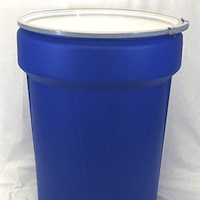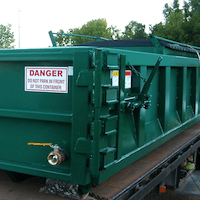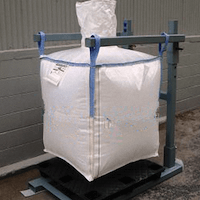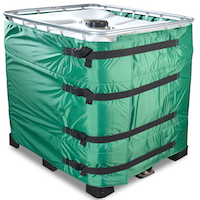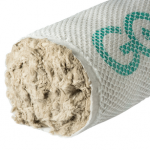
EPOXY PHENOLIC LINED STEEL DRUMS
Steel drums are a versatile packaging for the transport and storage of many materials. However, there are some materials, usually liquids in the food or chemical industries, that may not be compatible with steel. In these cases, drum linings are used to protect both the contents and the drum from contact due to damage or contamination from their interaction. The drum lining most commonly used is an epoxy/phenolic lining.
Epoxy phenolic coatings offer consistent high quality protection for a wide range of applications. The lining is created by combining heat-cured epoxy resin with thermosetting phenolic resin. The chemical resistance from these two resins makes for an ideal lining for a container holding liquids such as food products, detergents, latex paints or other materials with a pH range above 7.
This lining has high resistance to 92%-98% sulfuric acid at temperatures up to 120 degrees Fahrenheit. The coating is also resistant to hydrochloric acid, phenol, anhydrous chlorobenzene, carbon tetrachloride and many other chemicals. An epoxy phenolic lining is also flexible. So, when applied correctly, the lining can adhere to a dent and bend with the metal, preventing any chipping or contamination of the contents.
We strive to protect our clients, their materials and communities by connecting them with the right container for their contents and needs. Our lined steel drums are just one way we ensure that our drums are thicker, heavier and stronger enough to do the job. Compatibility testing is available, and recommended, to insure content integrity, refer to code SK when contacting us about this testing.
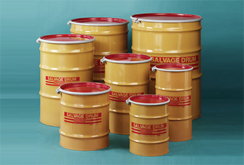
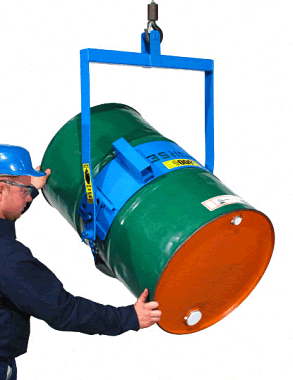

THE PURPOSE OF A STEEL DRUM LINING
Steel drums are often the ideal packaging for the transport and storage of contents across a vast number of industries. However, there are some liquid products, many in the food and chemical industries, that may negatively react with steel. These reactions could result in the contamination of product or in damage to the drum itself. To avoid these problems, and insure a safe containment, drums made to hold these kinds of contents are lined. These drum linings are specifically designed to combine with the contents and help protect the product and the drum itself from any dangerous reactions.
Before they are added, the linings of the steel drum will be tested to insure the prevention of any negative reactions. Once combined with the strength of the steel, a lining makes the drum a safe and proper for choice for many liquid materials. Any liquids that could react with bare steel must be put in a lined drum, and as always, it is important to know how the chemicals will react before storing and transporting.
The drum lining most commonly used is an epoxy/phenolic lining which is created by combining heat-cured epoxy resin with thermosetting phenolic resin. The chemical resistance these two resins create make a lining that is ideal for drums containing liquids such as food products, detergents, latex paints, or materials with a pH range above 7. An epoxy/phenolic lining is also flexible; when applied correctly the lining can adhere to a dent, or bend, within reason, with the metal. This coating prevents chipping and potential contamination of the contents. Lining quality is based on many attributes including the quality of resin and formulations used in manufacturing, and performance should be evaluated with a compatibility test to insure the lining can meet the needs of the end user
A modified phenolic lining uses a smaller amount of the epoxy resin, making it much less flexible. Although these linings are not used as much in the industry, the higher ratio of phenolic gives the lining more impact resistance. However, a phenolic lining does not have the same resistance to acids as an epoxy/phenolic. It is best used for drums containing organic solvents, insecticides, and other liquids in the pH range below 7.
Any questions or concerns should be brought to the manufacturer’s attention before any contents are put into a drum.
WHY WE OFFER BOTH “LINED” AND “UNLINED” STEEL DRUMS
In order to protect food from coming into contact with metal, food cans used to be coated internally with a phenolic lining. This lining was brittle and if the can was dented, it was likely that the interior lining had cracked. Today, linings offer the chemical protection of the phenolic plus they are mixed with the flexible properties of epoxy. Together, these epoxy/phenolic coatings are chemically resistant and able to adhere to a surface when it is damaged. While the epoxy/phenolic is a sprayed-on and cured coating (like paint) a passive rust inhibitor is applied to all our carbon steel drums in order to remove surface oil prior to painting. The rust inhibitor is much like the final rinse at a carwash, it is a light clear spray that is neither visible or measurable once it is applied. The purpose of the rust inhibitor is to prevent flash rust on uncoated carbon steel. If a customer needs an epoxy/phenolic lined drum for chemical or long-term rust resistance, then an unlined drum will not suffice. Please contact us if you have questions about our lining options.
Note: Some steel pails and drums on the market use a rust inhibitor as standard. Always good to know the interior coating and the compatibility to the liquids or solids to be placed inside the steel container products in use in your operations.


 P.O. Box 8149
P.O. Box 8149